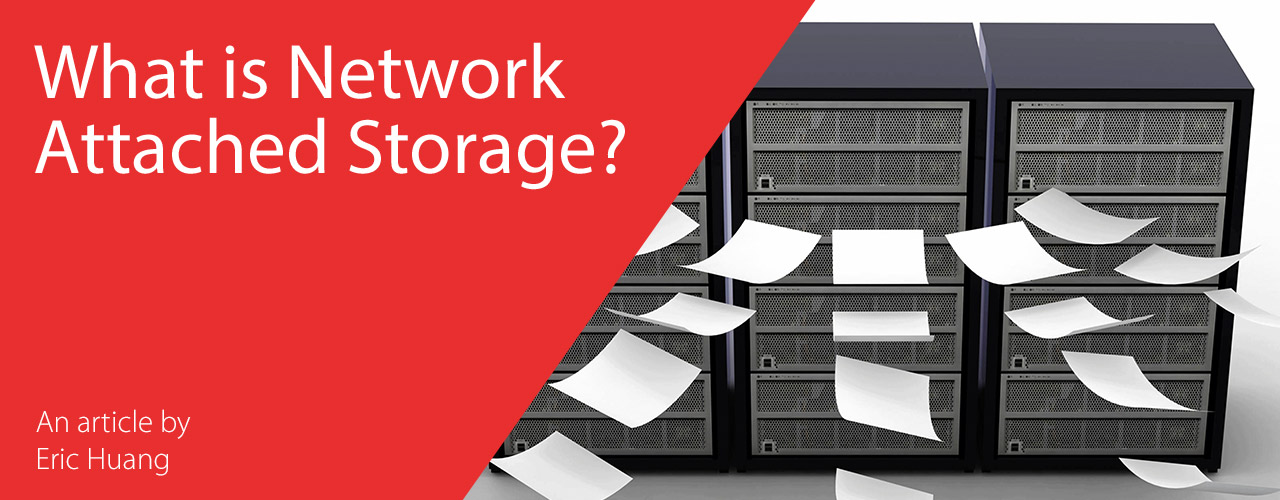What is Network Attached Storage? (NAS)
Network Attached Storage, or NAS, is a storage device that allows data to be stored and shared between a group of computer users. NAS systems are essentially computers but do not require a monitor or keyboard. The device simply needs to be connected to a router via Ethernet cable. They are controlled by the connected users with a utility software.
What are the benefits?
- Store and share files such as music, movies, and documents
- Back up files
- Stream media to a TV, game console, or mobile device
- Share a printer
- Store security footage
What do I need to build one?
- Case - Decide on what kind of NAS plan on building. Do you need easy access to the hard drives? Do you need it to be small so that it can be tucked away somewhere with limited space? How much storage space will you need?
- Motherboard - Any motherboard with a physical network port will work. Just make sure it supports the CPU and the RAM. Another important factor is the number of SATA ports it has.
- CPU - NAS systems don’t need an i7. Any entry level Intel or AMD processor is enough. You can even reuse an old processor if you have the motherboard for it. Try to keep the power requirement under 65W to minimize heat production.
- RAM - The general rule is 1GB of RAM for every 1TB of storage, but 8GB is usually enough.
- Boot Drive - Some operating systems such as FreeNAS can be imaged onto a USB drive. It frees one hard drive bay in your case. I would recommend a size of 8GB.
- Hard Drives - As many as the case supports. Any hard drive will work, but some brands such as Western Digital and Seagate have hard drives specifically designed for NAS systems. Some spin at a lower speed (5400 RPM) so there is less noise and vibration. Drives like SSDs have the highest level of read and write speeds while generating no noise.
- Power Supply - The average NAS system uses no more than 300W of power. Since they usually run 24/7, an 80 plus certified power supply will reduce power usage and help you save money on your electricity bill.
- Another important factor is the temperature and noise. If you want your NAS to be silent, you may want to swap your case fan with a low RPM fan, and change the CPU cooler to a passive cooler. If you’re more worried about temperature, then choose a fan with high airflow and a CPU cooler rated for the TDP of the CPU.
The parts that I would pick:
- Case - I like my NAS system to be compact, so I decided on an IN WIN IW-MS04-01-S265. The case comes with a 265W 80 plus bronze power supply and can support up to four 3.5 inch drives, one 2.5 drive, and one slim optical drive. Another cool feature is that the 3.5 drives are front mounted and they come with a SATA backplane, so hot swap is available. It’s not the lowest of the price range at $119.99 (Directron), but it comes fully loaded with all the features I need.
- Motherboard - The case only supports a Mini ITX motherboard, so I decided on an ASRock AM1B-ITX Mini ITX AM1. It supports up to 16GBs of DDR3 memory from 1066MHz to 1600MHz. It also has four 6 GB/s SATA ports.
- CPU - The motherboard uses an AM1 socket so my CPU would be the AMD Athlon 5350 ($49.99 Directron). It’s a quad core processor with an operating frequency of 2.05GHz. It only uses 25 watts of power so there will be very little heat output.
- RAM - I prefer my RAM in dual channel mode so I picked two Kingston ValueRAM 4GB DDR3 at 1333MHz. ($19.99 each at Directron)
- Boot Drive - The operating system I’m using will be FreeNAS. I would install it onto an USB 3.0 flash drive. Directron offers an 16GB Kingston DataTraveler USB drive for $9.99. I can use it for other things after my installation.
- Hard Drive - I would start out with a single 2TB drive. I prefer the red series from Western Digital ($92.99 Directron).
- Power Supply - Included in the case I selected.
- Optional
TOTAL PRICE: Under $350
Can’t I just buy one?
Yes, there are some pre-built NAS systems available that require little or no setup. Some have the benefit of customer support and a warranty if there are issues. There are higher end models that have hot swap capability, but you’ll have to pay more for that functionality. There are some models the size of a book end, but they lack the ability to add more storage capacity.
The advantage of building your own is the flexibility. You get to decide what components go inside, the amount of storage you want, the amount of storage you may want to add in the future, and the operating system.
In the end it’s best to choose the option that fits your budget and the amount of data storage you need.



